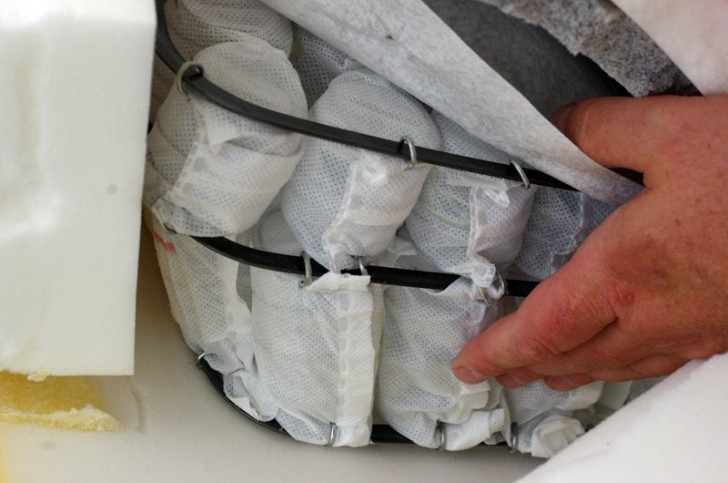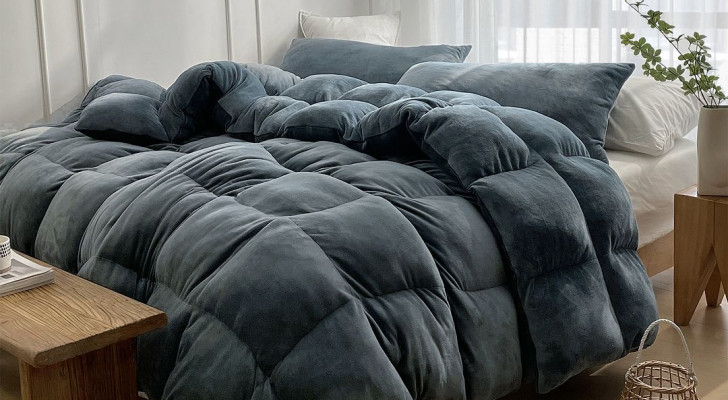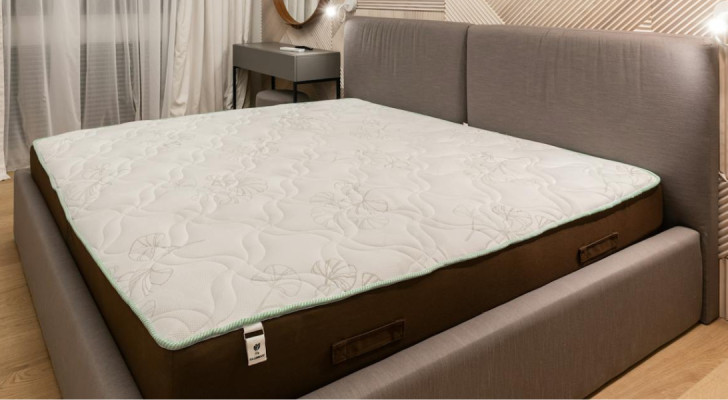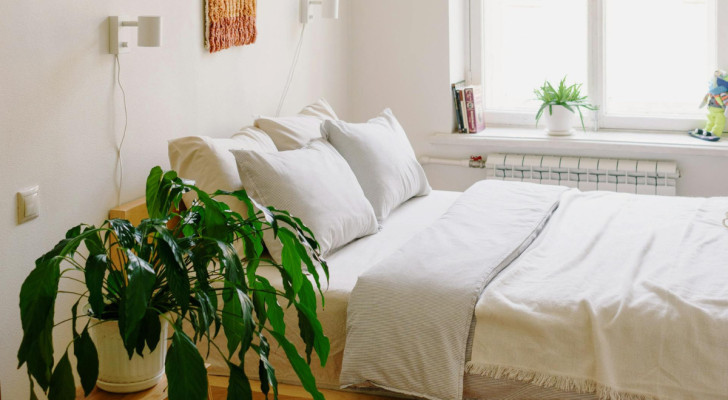Tips for choosing the right mattress and thus enjoying an optimal rest

Sometimes we do not realise how much time of our lives we spend sleeping in bed, but actually it is on average one third of our lives, and it is no mystery that to ensure a good rest, in a bed and above all on a comfortable mattress and suited to our needs, is one of the essential factors for a healthy life.
Choosing the ideal mattress, therefore, becomes important, and on the market we really find many different types depending on the sizes and above all the materials with which they are produced. Everyone has their favorite, but each of the possible categories has its advantages, and therefore it depends only on our needs: in fact, we must take into account body weight and height, any physical problems (in terms of bones or muscles), the number of people sleeping on the bed. Also the position we prefer to keep while we sleep and the average bedroom temperatures.
The dimensions of the mattress

For a mattress to be comfortable it must allow us to stretch the body and keep our arms open without touching the edges. In general, therefore, we should choose mattresses that are longer and wider than our body structure by 20 or even 30 centimeters, and it is equally important that they rest on perfectly compatible size bases, so as not to compromise their comfort.
Depending on whether it can accommodate one or two people, the mattress is single or double, and then there is also an intermediate category, that for a square and a half, which is less common. Depending on the various countries, the measurements of these three categories may be slightly different. In general, the double mattress can accommodate two adults well, while a square and a half is extremely comfortable for one person, but rather cramped for a couple of adults (on the other hand, it allows for extra space in the bedroom).
The so-called "French" mattress can also be found on the market, a smaller double size than the standard one which is therefore often mistakenly confused with the one and a half square, compared to which the French is larger. It can in fact accommodate two people and is 140 cm wide (therefore, a good compromise).
In all cases where the needs of the person or couple require different sizes, custom-made mattresses can be manufactured on request, which certainly have a higher cost, and perhaps also require linen and accessories that are also made to measure.
In addition to the dimensions that identify the surface of the mattress, there is perhaps an even more important one, namely the thickness or height. Many people, in fact, judge the quality based on this parameter, believing that the higher it is, the more valuable and comfortable it will be. But that's not always the case.
While it is certainly true that those that are too thin in most cases do not guarantee a restful sleep, and indeed can cause muscle or joint pain, even those that are excessively high are not necessarily comfortable.
The average size considered optimal is between 25 and 30 cm, but mattresses between 12 and 23 in height are also comfortable. The important thing, in fact, is not only the thickness but also the internal structure, which must be able to support the weight and accompany the shape of the body without deforming quickly with wear.
The internal structure

Spring mattresses
Spring mattresses are the traditional ones, which owe their name to the presence of springs in the center of the mattress, which make it elastic and robust, as well as guaranteeing better ventilation, which is why they are perfect for hot temperatures or for those who sweat a lot.
The presence of the springs also makes the mattress solid enough to be able to withstand even the weight of more robust people, and some more modern models also add a layer of memory foam on the surface that makes them more able to conform to the shape of the body as well as guarantee better thermal insulation, so you feel less cold during the night.
Latex
The latex of which the mattresses are made can be of natural or synthetic origin. In the first case it is a natural substance obtained from the rubber plant, in the other case it is an artificial material that imitates the same consistency and characteristics of that derived from plants. There are also models that are composed of both types of latex, as well as a number of compositions that also contain other materials besides latex.
Only the mattresses indicated as "full latex", in fact, are those that do not have other components inside them, and are generally at least 10 cm high; instead the simple wording "latex mattress" identifies in most cases those in which the latex is present at 60% or more, and the manufacturer's specifications must always indicate which are the other components. If, on the other hand, we see written “mattress containing latex”, it basically means that within the structure the latex is present in an amount less than 60%, or for a thickness of less than 10 cm. Also in this case it is necessary to specify which are the other components. Finally, there is the category of mattresses that only have a latex coating surface, which is why they are called "latex contact surfaces".
What distinguishes latex mattresses from traditional ones is their flexibility and greater heaviness. In addition, they distribute the pressure exerted by the weight of the person evenly, are able to adapt to the contours of the body, and absorb movements quickly and effectively, so anyone who moves a lot during sleep should prefer them: when you move, in fact, the shocks of the mattress are very softened if not imperceptible, so you can enjoy an uninterrupted sleep more easily.
When the percentage of synthetic latex is higher (even better if total), the mattresses are hypoallergenic, as they do not retain dust and do not create the ideal conditions for their proliferation. These are ideal for anyone with respiratory diseases. However, you must always pay attention to the possible allergy of some people to latex.
Memory foam mattresses
Those who live in harsh climates, or suffer a lot from the cold, should prefer Memory Foam mattresses. These in fact have a more compact internal structure, i.e. they circulate less air. In fact, it is sometimes advisable to air the mattress in the morning in order to dry the humidity.
Memory Foam mattresses are also flexible, so these also distribute pressure evenly during rest, compared to latex mattresses they are also lighter, easier to carry and handle. Their main characteristic, however, is that suggested by the name, that is, the fact that they are made of a foam in which the shape of the person who sleeps there remains imprinted. In fact, they adapt easily to the contour of the body, but this also means that if during sleep it is customary to change position very often, this mattress cannot quickly accompany the movements, and indeed takes some time to conform to our shape again. . It is recommended for people with a slim build, and all those who tend to maintain a more or less fixed position during sleep.
There are also mattresses that have natural materials inside them such as organic cotton, which however must be certified to be sure that it is not treated with pesticides; wool, excellent for regulating the heat and humidity of the body, but which is sometimes treated with chemicals; organic wool, free of chemical additives or preservatives; horsehair; camel hair, which manages to keep body temperature constant, creating a dry and pleasant microclimate; linen and silk.
Other important choice parameters

Mattresses need to be stiff enough to support our body weight correctly, but not too stiff to make it uncomfortable to lie on, so the level of stiffness or flexibility needs to be assessed at the time of purchase. A correct sleeping position is one that respects the curvature of the spine. It is therefore necessary to try to lie down on the mattress to understand if the best composition for each of us is that of a harder or more flexible mattress.
Body weight also plays an important role: sturdier people need more support, so they must prefer firmer mattresses. These are also the best mattresses for those who almost always sleep on their backs, and therefore a hard surface offers better support for the spine.
On the other hand, when you prefer to sleep on your side, you cannot rest your shoulders and arms on a mattress that is too rigid, on the contrary, it will be preferable that it is soft enough to let these parts of the body sink a little. On the other hand, if a person of slender build sleeps on a mattress that is too rigid, he will not exert enough pressure on it to feel that the body is "welcomed" by the surface, and therefore he will have to prefer those that conform to the body by adhering easily to the forms.
Since it is impossible for two people with incompatible needs regarding the aforementioned characteristics of the mattresses to be able to find one capable of accommodating both in the best way, a solution to always take into consideration is to place two different mattresses on the same bed structure.
From all this it can be deduced that a perfect mattress for everyone does not exist, but there can be the best one for everyone. The method to find out is to try it, which means that at the time of purchase you have to lie down on the mattresses assuming the positions we normally hold during sleep, trying to move just like we would on the mattress at home. It is in fact an important expense, sometimes even huge, for an object that will accompany us for a long time and that directly affects our well-being.
For example, if after lying on the mattress in the supine position we notice that there is a lot of space between the hollow of the back and the surface, it means that the mattress cannot adapt to our shapes, that is, it is too rigid. If, on the other hand, we find it difficult to put our hand between the lower back and the mattress itself, there is a very good chance that by sleeping every night we will end up sinking into it because it is too soft.
Have you already found your ideal mattress?





